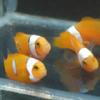-
Topics
-
Latest Update
-
0
FOC Coral Bandid Shrimp
Hi, I'd need to give away my CBS named Shadow. He's a decent sized guy, been with me for a few months, a darling of a shrimp. But he's started attacking my small fish, fish have gone missing through the months, few have died the past week. Unsure him or anything else. My current fish are all healthy. Free of charge. Just promise to take good care of him. Please quarantine him first, or put him in a fishless setup for a few weeks. Self collect at Indus road. Cheers. -
1
WTT Space Invader Pectinia
Hi can u share ur WhatsApp number so I can chat with u -
1
Selling Aquaticlife T5HO & Wyatt lights
Price reduced T5HO - $200 Both Wyatt - $150 -
0
Decommission Sales
**Decomm Sales** Hi fellow reefers, I'm decommisionning due to moving. Prefer to let go full set cheap if possible. Ownself collect nearby Serangoon. Tank is > 1 years old, still running a month ago. Livestock all sold. A: Tank and Equipment 1. Glass tank (<25 galloons, black background) 2. Bubble-Magus Skimmer 3. Finnex PX-150 Compact Aquarium Canister Aquarium Filter 4. sunsun jvp-110 wavemaker 5. Aqua Knight LED marine (sold) 6. RODI System C: Accessories 1. Salifert kits (Ca, Mg, kH, No3) 2. Seachem PhosGuard -
1
WTT Space Invader Pectinia
frag $100, colony $450 Self collect at Yew Tee cck
-





Recommended Posts
Join the conversation
You can post now and register later. If you have an account, sign in now to post with your account.